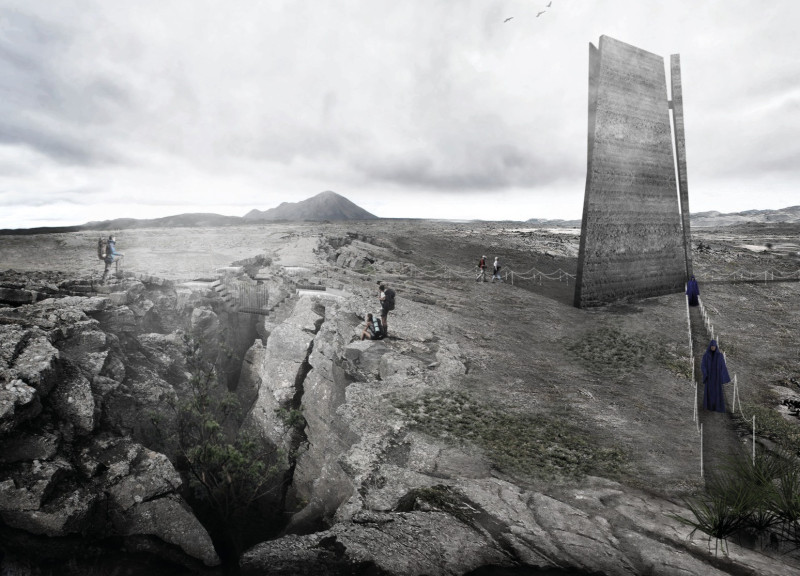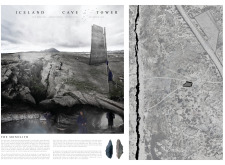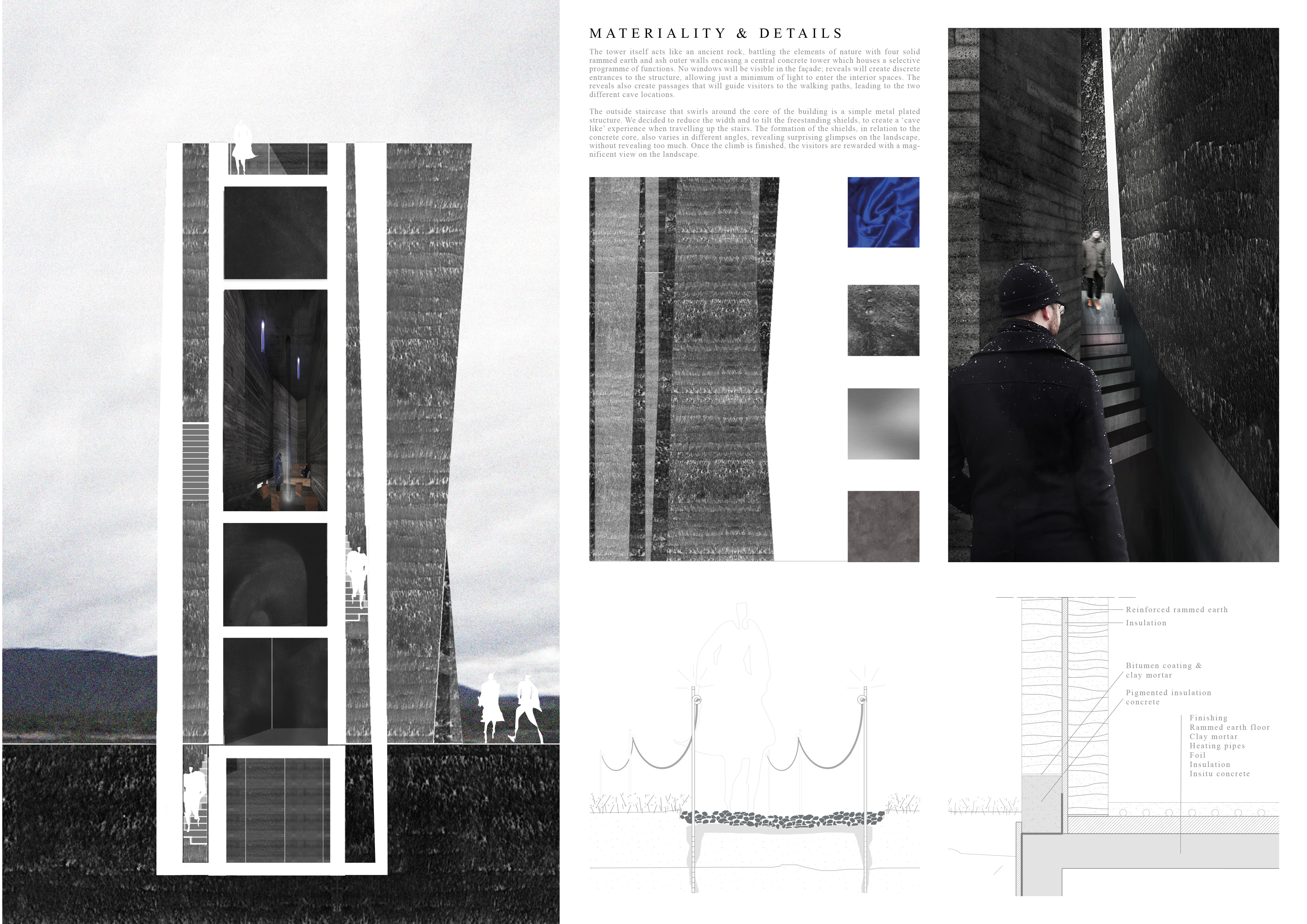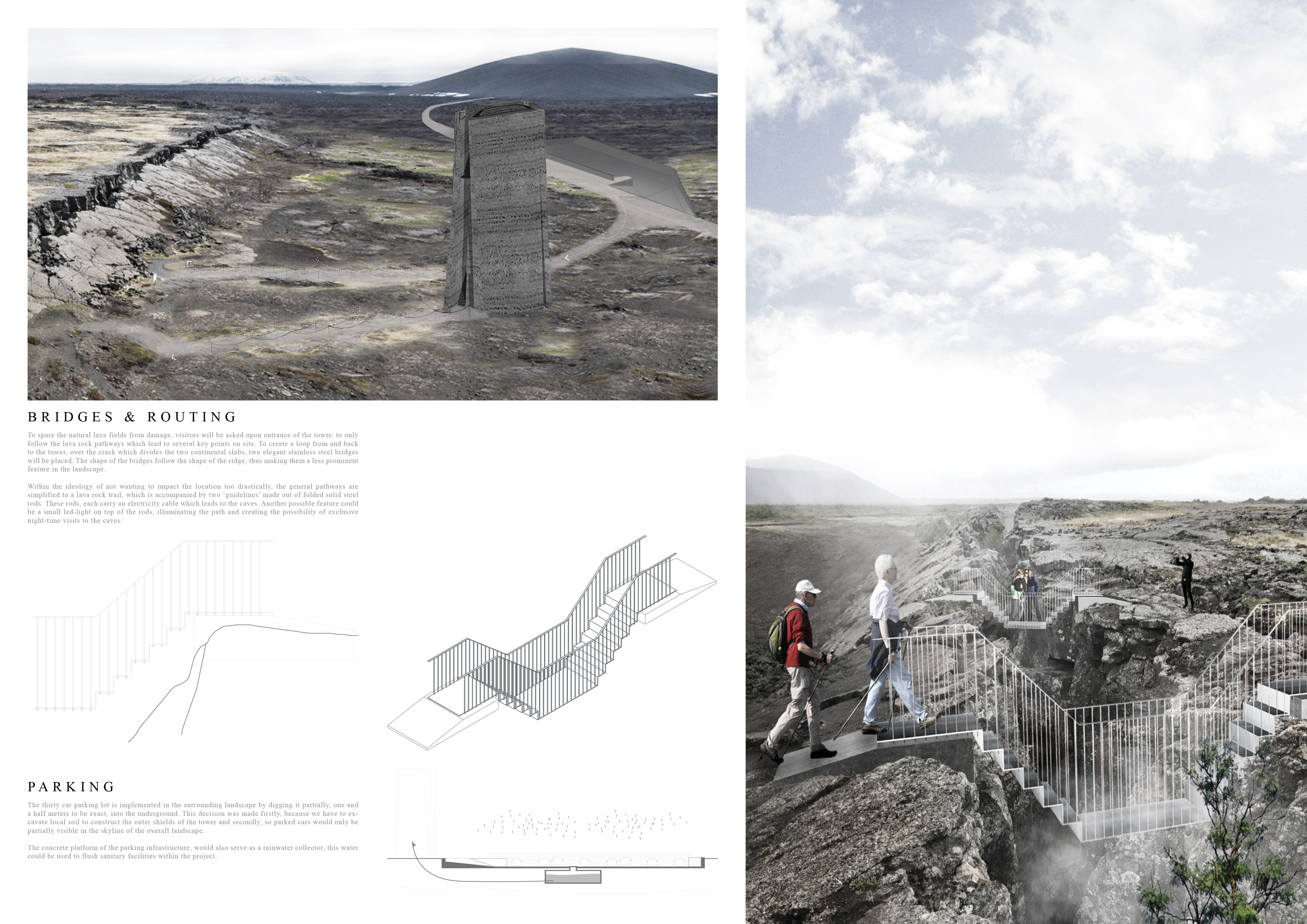5 key facts about this project
The Monolith is situated in the Mývatn area of northern Iceland, designed to respond to the growing number of visitors drawn to the Grjótagjá caves. It serves as a center for tourists, aiming to create a mindful experience while respecting the natural surroundings. The design features a vertical form that acts as a landmark, enhancing the scenic views of the landscape while reducing the impact on the environment.
Site Relationship
The design emphasizes a close connection to the environment. The vertical structure rises thoughtfully from the land, offering wide views without dominating the landscape. Visitors travel along designated paths that lead to the caves, promoting a sense of exploration. This approach allows them to interact with the Icelandic terrain naturally, enhancing the overall experience of the site.
Layout and Function
The building's layout is designed to guide visitors through different areas. Key spaces include a café and a lounge, which provide comfort and rest for those exploring the area. The ground floor is organized efficiently, allowing just a few staff members to manage operations. This arrangement not only improves visitor experience but also aligns with a goal of reducing human impact on the surrounding nature.
Material Choices
Materials for The Monolith reflect the local environment. Rammed earth forms the outer walls, blending with the landscape and offering energy efficiency through thermal mass. The central core is made of concrete, providing sturdy support that allows flexibility in interior space. These material choices show an effort to balance the needs of construction with the natural setting.
Unique Design Elements
One interesting detail is the use of high-level openings that let in natural light. This feature makes the lounge area feel warm and welcoming. The swirling staircases leading to the viewing platform create a sense of movement and discovery. As visitors ascend, they gain new viewpoints of the striking landscape, turning the journey into a memorable experience.





















































